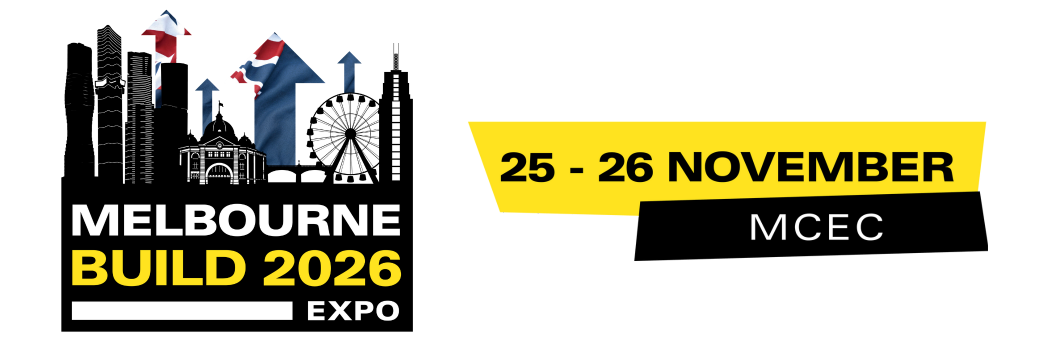Building Clarity with Digital Construction
)
Building a home should be one of life's most rewarding journeys, yet clients often begin construction feeling uncertain, overwhelmed, and anxious about the process.
We've found the answer in embracing digital construction tools, not merely for innovation, but to deliver a superior experience for both our clients and our team.
It’s not about technology for the sake of it. It’s about giving people clarity. Clearer designs, clearer budgets, clearer updates, and clearer records of the home they’ve invested so much into. When we strip away the guesswork, the whole process becomes easier for everyone involved.
Why Digital Construction is Essential
The construction industry is undergoing a significant transformation. Technology is no longer optional, it’s becoming the cornerstone of how modern builders execute projects. Still, many builders continue to rely on outdated methods, which can lead to miscommunication, budget overruns, and preventable errors.
What makes digital construction essential is the way it ties every part of a project together. It links design, estimating, scheduling, site documentation, and communication into one connected process. When information flows seamlessly, the whole team from architects and engineers to trades and clients are on the same page.
This shift isn’t just about efficiency; it’s about risk management. Identifying clashes before construction begins can save thousands. Tracking costs in real time prevents small overruns from snowballing into major budget issues. Recording a project in detail protects both the builder and the homeowner long after the job is complete.
Just as importantly, digital construction raises the bar for transparency. In an industry where clients have often felt left in the dark, these tools create accountability. Homeowners can see progress, understand decisions, and have confidence that what was promised is being delivered.
The result is an industry moving away from reactive problem-solving and towards proactive planning. Builders who embrace this way of working aren’t just adopting new tools they’re shaping a future where projects are more predictable, more collaborative, and ultimately, more rewarding for everyone involved.
3D BIM Modelling
Designing and constructing a home is no longer confined to flat drawings and rough allowances. Before work begins on site, a detailed 3D model can be created using the same materials, dimensions, and specifications that will be used during the build. This makes the model both accurate in cost and realistic in appearance, providing a clear picture of the finished project.
These models, often called BIM (Building Information Models), do more than just look like the home. They contain data that connects the design directly to quantities, costs, and construction details.
This creates a clear path to:
- Accurate costings: Because the model is built with real materials, every line item reflects what will actually go into the project rather than relying on allowances.
- Clash detection: Issues like structural conflicts or service clashes can be identified and resolved digitally, long before they cause delays or rework on site.
- Realistic visualisation: Clients can explore their design in 3D, seeing not just shapes on a page but a realistic version of their future home.
This approach changes the pre-construction process from something that often feels uncertain into a process built on clarity. Clients can connect their budget directly to the physical reality of their home, make informed decisions, and move forward with greater confidence.
By modelling in actual materials and linking the design directly to cost and construction data, the industry is moving towards more proactive, transparent, and reliable project delivery. It’s not just about building more efficiently, it’s about building with greater certainty from day one.


An example of a 3D model vs the live project. Photo Credit: Robby Kruyer, EvoBuilt.
Project Management Software
Coordinating a building project means keeping track of hundreds of moving parts - trades, suppliers, schedules, budgets, and compliance requirements. Relying on spreadsheets, email chains, and phone calls is no longer enough. The risk of details being missed or miscommunication slowing things down is simply too high.
Project management software has become a critical tool for modern construction. By centralising information in one platform, it creates a single source of truth for everyone involved in the project. Costs, schedules, and documentation are no longer scattered, they are tracked in real time and linked directly to the progress of the build.
This kind of software provides us with -
- Budget control: Job costs can be monitored live against the budget, making it easier to spot potential overruns before they become a problem.
- Scheduling accuracy: Trades and suppliers are coordinated in sequence, reducing downtime and keeping work flowing on site.
- Centralised communication: Instructions, approvals, and key documents are logged in one place, cutting down on miscommunication and lost information.
For builders, this creates consistency across projects. Each home follows the same structured framework, which reduces errors and ensures critical tasks aren’t overlooked. For clients, it provides transparency. They can be given clear updates at key milestones and trust that the project is being managed with discipline rather than guesswork.
By moving away from manual systems and embracing digital coordination, the industry is shifting towards a more accountable way of building. Project management software doesn’t replace craftsmanship, it supports it, ensuring the work on site is backed by systems that keep everything running smoothly.
Capturing the Build with 3D Virtual Walkthroughs
One of the most useful steps in digital construction is a 3D site capture that stitches high-resolution panoramas into a virtual walkthrough of the project. These aren’t just fancy photos, they give you a full digital record of the project that you can come back to years down the track. You can measure off them, trace services, and see exactly what went into the build, even after everything’s been covered up.
Three key stages:
- Pre-construction (existing conditions):
For renovations or extensions, we scan the home before any work begins. This gives us a baseline of what was there, every crack, fence line, or wall detail. If a question ever comes up later about what was pre-existing, there’s no debate. It’s all recorded.
- Pre-plaster (rough-in complete):
This is the big one. Before the plaster goes on, we capture every stud, cable, pipe, and duct. Later on, if you want to find a stud to hang a painting or track down a pipe for maintenance, you’ve got the record. It’s also a huge help if any warranty or renovation work happens years down the line, you can literally look inside the walls without pulling them apart.
- Handover (finished home):
At completion, we scan the whole home. It’s not just a nice keepsake; it’s also a record of exactly how the home looked at practical completion. It can be linked with manuals, paint schedules, and appliance details so everything you need is in one place.
The value of this is massive. For the homeowner, it’s peace of mind and a reference that lasts well beyond the build. For the builder, it’s accountability and a way of proving what was delivered.
The main thing is timing, you want to capture after the rough-ins and inspections, but before plaster. And it’s worth being clear up front about who stores the data, how long it’s kept, and who can access it. Done properly, these walkthroughs turn the hidden parts of a home into something visible, useful, and permanent.
Building for the Future
The way we build homes is changing, and digital tools are a big part of that shift. 3D modelling, project management software, and 3D walkthroughs aren’t gimmicks, they’re practical tools that give homeowners more clarity and builders more accountability.
For me, this isn’t about technology for the sake of it. It’s about putting the homeowner at the centre of the process and making sure the journey feels clear, transparent, and well-managed. A home should be healthy, functional, and built to support the way people actually live.
As the industry evolves, digital construction is setting a new standard. The builders who embrace it will deliver projects with fewer surprises, more transparency, and a smoother experience for their clients.
At the end of the day, technology doesn’t replace craftsmanship, it supports it. It gives us the systems to back up the work, protect the client, and make the whole process less stressful. For me, that’s what building for the future looks like: Healthy homes built with clarity and care.
 About the Author
About the Author
Robby Kruyer is Founder and Director of EvoBuilt, With over 20 years in the industry and a passion for innovation it was a perfect fit to be a part of the Melbourne Build Expo as a Digital Construction Innovator.
As a certified Passive House builder, Robby is committed to creating healthier, more efficient homes that go beyond Australian standards.
He is passionate about raising the standard in residential construction by using digital tools to deliver greater certainty for clients. From 3D modelling and accurate budgeting to integrated project management systems, Robby ensures that every EvoBuilt home is designed and delivered with transparency and efficiency.
Social Links - Connect with Robby
- Website: www.evobuilt.com.au
- Instagram: @evobuilt_
- Facebook: EvoBuilt
- LinkedIn: Robby Kruyer
A guest blog by Robby Kruyer.
Melbourne Build is the leading and largest construction trade show for Melbourne and Victoria, taking place October 22nd & 23rd 2025 at MCEC. Featuring two jam-packed days of knowledge-sharing, 450+ expert speakers across 12 conference stages, a 175+ booth exhibition, Meet the Buyers, business networking, live music, entertainment and so much more! Don’t miss out on free tickets.

